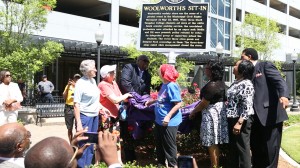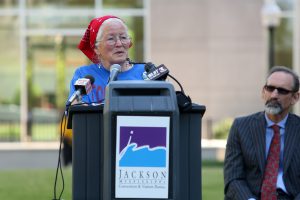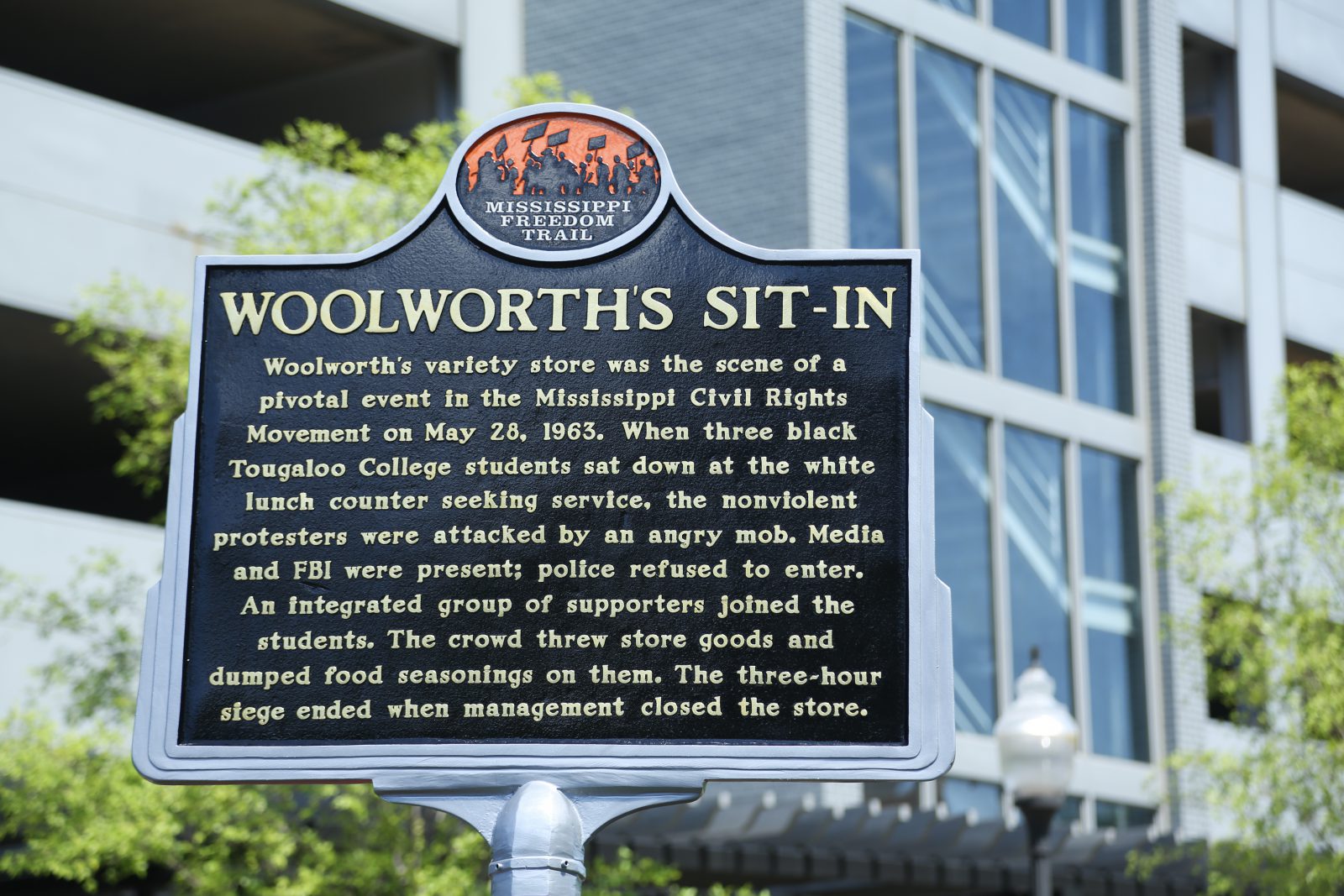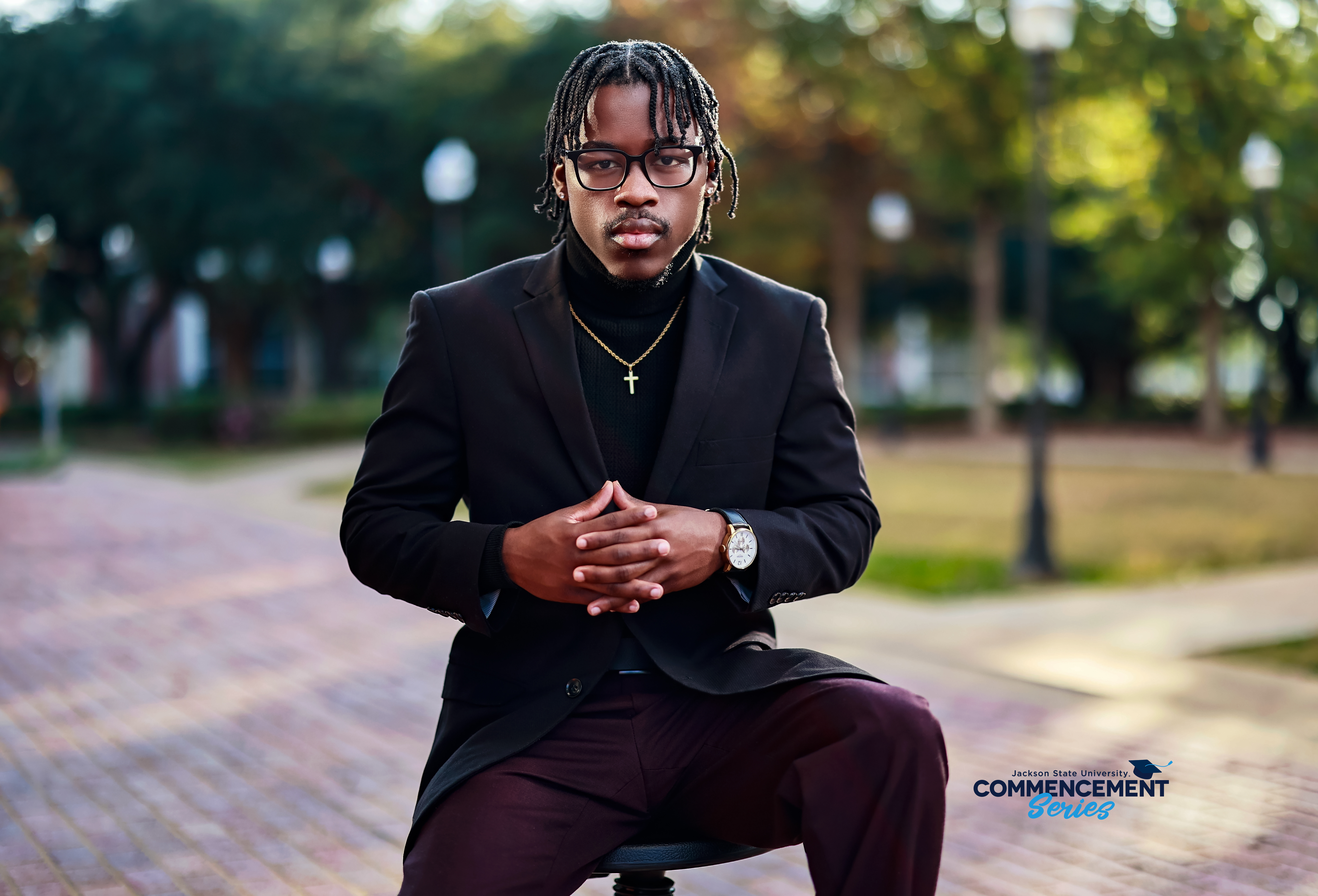Three young activists were the first to take their seat at the Woolworth lunch counter, ready to face hostile whites who were determined to keep Jackson, Miss., a segregated society. Then, more activists came until there were nine. They were doused with ketchup, mustard and food. Some of them were viciously attacked because back in May 1963 black people were not allowed to eat at the same lunch counter as whites.

Yet, the protestors did not move, and their resilience is remembered as a pivotal point in America’s civil rights movement because it inspired Jackson’s black community to join the struggle for equality and justice. It also let the nation see the ugliness of segregation in the South.
On Tuesday, the state’s Division of Tourism unveiled a historical marker at the site of the former Woolworth store on Capitol Street. It’s a grassy, picturesque area now with no reminders of past racial strife. The marker’s unveiling was among a number of events sponsored by the state, Jackson State University and Tougaloo College to commemorate the 50th anniversary of the Woolworth sit-in. Many of the original nine were Tougaloo College students at the time of the protest.

Joan Trumpauer Mulholland, one of the sit-in participants, knew the risks, but she didn’t care.
“I was in an out-of-body experience,” Mulholland said, describing how she felt when she sat down at the counter. “I didn’t think we would make it out alive.”
Trumpauer said reporters and photographers who covered the protest “were in as much danger as we were because they would take the story to the world.”
However, she said one name above others should be remembered – Medgar Evers, who was then the NAACP’s field secretary in Mississippi. Evers was in contact with demonstrators who informed him about the unfolding developments. Some two weeks later, Evers was murdered for his civil rights work.
Eric Stringfellow, director of Jackson State’s University Communications, said he was humbled to be in the presence of the civil rights activists who fought to improve the lives of black people in this country.
“This is something (Jackson State) really supports and understands its significance,” Stringfellow said to a crowd gathered at the marker site.
Others who delivered remarks were Malcolm White, director of the Division of Tourism at the Mississippi Development Authority; Dr. Beverly Hogan, president of Tougaloo College; Dr. Robert Luckett, director of the Margaret Walker Center at JSU and one of the organizers of the events; Sen. Hillman Frazier, Sen. David Blount, Jackson Mayor Harvey Johnson and Rickey Thigpen, executive vice-president of the Jackson Convention and Visitors Bureau.
The ceremony was in honor of Pearlena Lewis, Anne Moody, Mulholland, Memphis Norman, Lois Chaffee, John Salter, Walter Williams, George Raymond, Tom Beard. They were the nine who took part in the sit-in.
The Rev. Alphonzo Lewis, a civil rights activist and brother of the late Pearlena Lewis, said on the day of the sit-in, his sister wore a brand new suit when she left their home. He said the family wasn’t aware of her protest plans.
“When she came home, that suit had mustard and ketchup and all kinds of things on it and in her head,” Lewis said. “She was in good spirits, feeling that something had been accomplished.”
M.J. O’Brien, who authored a new book about the Woolworth sit-in and attended the ceremony, said the protest was significant because it was the first time that demonstrators were not immediately arrested. O’Brien said the sit-in occurred soon after the U.S. Supreme Court ruled that such demonstrations were legal expressions of free speech.
“It inspired the black community in Jackson to rise up and over the next two weeks there were daily demonstrations orchestrated by Medgar Evers and the NAACP. Woolworth was the spark that got this going in the Jackson community,” O’Brien said.
Jackson Daily News photographer Fred Blackwell took vivid images that helped draw a national spotlight to segregation. Blackwell and Bob Bullock, a WJTV reporter/photographer who also covered the sit-in, attended the marker unveiling.
Bullock said the marker’s significance cannot be overstated.
“I have seen the gradual improvement after the Woolworth sit-in,” Bullock said. “People in Mississippi eventually started working together.”







